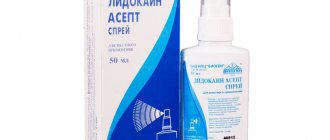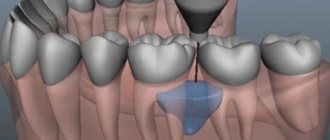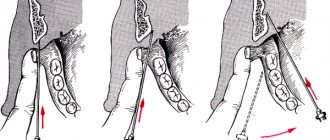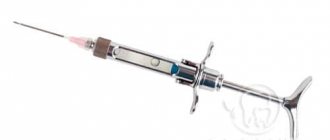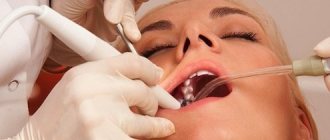This article provides a detailed step-by-step description of anesthesia techniques using the STA (Single Tooth Anesthesia) system from Milestone Scientific (USA).
This article provides a detailed step-by-step description of the methods of anesthesia using the STA system (Single Tooth Anesthesia – anesthesia in the field of a single tooth), the company Milestone Scientific (USA).
The history of local anesthesia in dentistry goes back more than 150 years. However, it took decades for dentists to move from the Dr. Luer syringe and Novocaine to a disposable syringe with needles of different sizes and a solution of lidocaine as an anesthetic. It took several more decades to switch to the use of carpule syringes and carpule forms of anesthetics. However, despite all the innovations, the doctor was still limited to two traditional methods of pain relief: infiltration and conduction. The method of intraosseous anesthesia developed in recent years actually turned out to be quite traumatic and risky, since the anesthetic solution could enter the bloodstream, causing various complications, especially in patients at risk. Even intraligamentary anesthesia could not become a full-fledged replacement for mandibular anesthesia due to the short duration of pain relief, the complexity of implementation and the high incidence of side effects, such as injection pain, postoperative discomfort, soft tissue damage and bone resorption. All these side effects are mostly associated with the inability to control the speed of supply of the anesthetic solution, the accuracy of its administration and the pressure created in the tissues.
In recent years, computer technologies for supplying anesthetic solution have been increasingly developed. The ability to control the feed rate, which does not exceed the patient's pain threshold, the pressure created in the tissues and the position of the needle in the tissues, makes computer-controlled anesthesia the technique of choice in everyday dental practice. Modified intraligamentary anesthesia has made it possible to abandon conduction techniques in almost all clinical situations, thanks to the ability to accurately, computer-controlled injection of more anesthetic (which increases the duration of anesthesia) with minimal pressure (which reduces the number of postoperative complications) and low delivery speed (which makes the procedure virtually painless).
This article provides a detailed step-by-step description of anesthesia techniques using the STA (Single Tooth Anesthesia) system from Milestone Scientific (USA).
Milestone Scientific has developed a pre-injection technique that is highly recommended when using the STA System. The technique consists of three stages:
- Puncture
- preliminary anesthesia according to the type of topical anesthesia by pressing the cut of the needle with the tip of a cotton swab to the surface of the tissue with the supply of an anesthetic solution - Penetration
- slow two-way rotation of the needle as it moves through the tissue until it reaches the injection site - Injection of a standard amount of anesthetic solution
at a constant rate not exceeding the patient's pain threshold
This method provides a virtually painless injection for every patient.
All stages are easy to use and differ slightly from traditional techniques, however, the doctor is freed from the need to independently control the rate of anesthetic supply and pressure in the tissues - this function is performed by a computer, which greatly facilitates the procedure and makes it simpler and more predictable.
Infiltration anesthesia
- Press the bevel of a 30G 1″ or 30G 1/2″ needle against the mucous membrane at the injection site and apply pressure using a cotton swab.
- Deliver anesthetic at a ControlFloTM rate of 8–9 sec.
- Slowly rotate the needle to pierce the first layer of soft tissue.
- Slowly advance the needle until the anesthetic injection site is reached.
- Once the needle reaches the site of injection of the anesthetic, perform an aspiration test. If blood is observed in the tip, reposition the needle and repeat the aspiration test.
- If the aspiration test is negative, continue injecting anesthetic at the ControlFloTM rate for 5 to 6 seconds, then change to the RapidFloTM rate and inject the usual amount of local anesthetic as if using a traditional carpule syringe.
- After injecting the recommended amount of anesthetic solution, wait 5-6 seconds and slowly remove the needle, trying to avoid any drops of anesthetic getting into the patient’s mouth.
- The effect occurs much faster than when using a traditional carpule syringe.
The essence of computer anesthesia
The anesthetic is delivered to the nerve endings under low pressure along the path of least resistance. The rate of administration and dosage are determined by the device individually depending on the anatomical and physiological characteristics of the patient. In case of any deviations from the norm, the microprocessor sensor gives an audible and visual signal.
Computer anesthesia technology provides the doctor with all the necessary information in real time. The specialist monitors the correct position of the needle, which eliminates discomfort for the patient. In addition, the needle moves smoothly and evenly, in a circular motion, providing a quick and maximum analgesic effect.
Anesthesia of the anterior and middle superior alveolar nerve
- Place a 30G 1/2″ needle at the injection site, centered between the midpalatal suture and the free edge of the gum on a line drawn between the premolars.
- Press the bevel of the needle against the mucous membrane and press on it with a cotton swab.
- Deliver anesthetic at a ControlFloTM rate of 8–9 sec.
- Slowly rotate the needle left and right to penetrate the first layer of soft tissue.
- Slowly advance the needle while continuing to rotate it.
- Once bone contact is achieved, position the needle at a 90° angle to the premolars and perform an aspiration test.
- If blood is observed in the tip, reposition the needle and repeat the aspiration test.
- If the aspiration test is negative, continue injecting anesthetic at the ControlFloTM rate. Inject the usual amount of local anesthetic as if using a traditional carpule syringe: when using 4% articaine with 1:200,000 epinephrine, the recommended dosage for adults is approximately 1/3 to 1/2 a carpule.
- After injecting the required volume of anesthetic, wait 6 s and slowly withdraw the needle using a bilateral rotation technique, taking care to avoid dripping anesthetic into the patient's mouth (Fig. 1).
The area of anesthesia extends from the medial buccal root of the first molar to the central incisor, including the palatal tissue in this quadrant.
Rice. 1
AMSA (Anterior Middle Superior Alveolar) technique
Advantages of innovative technology
- efficiency;
- the ability to calculate the dose of anesthetic individually for each patient;
- precise control of the gum area where pain relief is required;
- lack of numbness effect on the patient’s tongue, lips and face;
- the transience of freezing action, which guarantees the absence of headaches for the patient after manipulation.
Dentists recommend using computer anesthesia for patients with a low pain threshold, children, and those who suffer from a fear of needles. After administering analgesics using the device, you can perform standard dental procedures of varying levels of complexity, be it the treatment of pulpitis, caries, or even prosthetics.
Anesthesia in the area of the incisive foramen
- If desired, apply topical anesthesia to the incisive papilla.
- Press the bevel of a 30G 1/2″ needle against the gingival papilla perpendicular to its direction using a Q-tip.
- Deliver anesthetic at a ControlFloTM rate of 8–9 sec.
- Slowly rotate the needle to penetrate the gingival papilla.
- Hold the needle in place for 5 to 6 seconds while continuing to inject anesthetic at the ControlFloTM rate. Wait until the gingival papilla turns white.
- Place the needle vertically to improve its penetration into the nasopalatine canal.
- Continuing to slowly rotate the needle left and right 180°, advance it into the nasopalatine canal. Make stops as you advance the needle so that the anesthetic solution always advances in front of the needle tip.
- Upon reaching the inner bone wall of the nasopalatine canal, withdraw the tip back 1 mm and perform an aspiration test. If the aspiration test is positive, reposition the needle slightly.
- If the aspiration test is negative, maintain needle position and inject 1/3 to 1/2 carpule of 4% articaine with 1:200,000 epinephrine at ControlFloTM rate.
- Stop the anesthetic injection, wait 6 s and slowly remove the needle, being careful to avoid dripping anesthetic into the patient's mouth (Fig. 2).
The area of anesthesia extends from canine to canine of the upper jaw, including the tissues of the palate.
Rice. 2
PASA (Palatal Anterior Superior Alveolar) technique
“Carpule” anesthesia in therapeutic dentistry: choice of drug, features of implementation
Painlessness of all diagnostic and therapeutic procedures is the most important condition for the effective treatment of dental diseases. However, unfortunately, many patients still associate a visit to the dentist primarily with pain. The prevalence of fear associated with possible painful dental treatment, according to various authors, is 61–92%. And 5-14% of the population do not go to the dentist at all because of fear! In addition, the very atmosphere of the dental office, even in an emotionally neutral situation, contributes to the appearance of noticeable negative vegetative reactions in patients. Their typical manifestation is a sharp increase in blood pressure (BP) and heart rate (HR). The frequency of complications and systemic adverse reactions during injection anesthesia at an outpatient dental appointment remains high (about 10% of cases).
Attempts to solve the problem of increasing the effectiveness of local anesthesia in dentistry while simultaneously reducing the impact of psychotraumatic factors on the patient and the risk of complications do not stop to this day.
To a large extent, this problem can be solved by “carpule” anesthesia (Fig. 1). However, it should be recognized that quite often, carpuled anesthetics are not used optimally by practicing dentists, without taking into account the peculiarities of their composition, pharmacological characteristics and possible undesirable side effects. Often, the dentist does not even know what anesthetic is in the carpule, what medicinal additives it contains, what possible side effects and complications are...
Rice. 1. A set of instruments and medications for “carpule anesthesia”:
a – carpules with anesthetic
b – needles
c – carpule syringe
Injection anesthesia has found wide application in therapeutic dentistry. Under local anesthesia, treatment of caries and other lesions of hard dental tissues, endodontic procedures, professional teeth cleaning and periodontal interventions, and sometimes even teeth whitening, are currently carried out.
In addition to the “classical” requirements for all local anesthetics (minimal toxicity and allergenicity, absence of damaging effects on body tissue and nerve structures, low likelihood of complications and side effects, rapid biotransformation in the body, etc.), to the drugs used for local anesthesia in therapeutic dentistry, requirements are imposed that reflect the specifics of therapeutic and prophylactic manipulations carried out by dental therapists.
The most significant additional requirements for anesthetics used in a therapeutic dentistry clinic, in our opinion, can be formulated as follows:
− provide deep, complete anesthesia of hard tissues and dental pulp, periapical tissues and oral mucosa in the area of intervention, including being effective in infiltration anesthesia of molars and premolars of the lower jaw;
− have the fastest possible onset of anesthesia (1-5 minutes);
− the duration of effective anesthesia should ensure the painlessness of all treatment and preventive measures, incl. and at the final stages of treatment (removing the matrix and interdental wedges, grinding and polishing restorations in the subgingival area, filling root canals with hot gutta-percha, suturing after periodontal interventions, etc.). Thus, given the duration of the most common therapeutic dental procedures, the duration of effective action of the local anesthetic should be 60-75 minutes.
− ensure rapid and complete cessation of anesthesia of teeth and surrounding soft tissues after completion of dental procedures (optimally – 2.5-2 hours after anesthesia);
− maintain chemical stability and pharmacological properties throughout the entire recommended storage period (up to 2-3 years) at room temperature, including possible fluctuations.
The widest range of carpuled anesthetics on the Russian dental market is represented by (France):
− Septanest 4% 1:100.000;
− Septanest 4% 1:200.000;
− Scandonest 2% Special;
− Scandonest 3%.
Septanest 4% 1:100,000 (Fig. 2), in our opinion, should be considered as the main anesthetic for use in therapeutic dentistry. This drug has a deep analgesic effect. The rapid onset of anesthesia – 1-3 minutes – saves the doctor’s working time. The duration of anesthesia is 60-75 minutes.
Rice. 2. Septanest 4% 1:100.000 (Septodont).
Septanest 4% 1:100,000 penetrates well into bone tissue, allowing most manipulations to be performed under infiltration anesthesia, including the treatment of molars and premolars of the lower jaw. When using this drug, we resort to conduction anesthesia on the lower jaw (torsal, mandibular) only when it is necessary to anesthetize a large area of the dental system (for example, with the simultaneous depulpation of 3-4 chewing teeth, surgical intervention on the periodontium of 1-2 segments of the dentition, etc.). d.).
As our clinical experience shows, the use of Septanest 4% 1:100,000 is effective for conduction and infiltration anesthesia for any therapeutic dental procedures: treatment of caries and other lesions of hard dental tissues, long-term aesthetic restorations of teeth with composite materials, endodontic manipulations, professional teeth cleaning, periodontal interventions etc.
Septanest 4% 1:100,000 is a 4% solution of articaine with increased adrenaline content. Due to the high concentration of the vasoconstrictor, the duration and depth of anesthesia increases due to local tissue ischemia and slower leaching of the anesthetic from the injection area [Petrikas A.Zh., 2009]. Slowing down the general absorption of the anesthetic due to local constriction of blood vessels also reduces the severity of possible “general” side effects from the anesthetic. In addition, local tissue ischemia in the anesthesia zone reduces bleeding, facilitating therapeutic procedures.
An important feature of Septanest 4% 1:100,000 compared to analogues is the presence of sodium salt EDTA in its composition. This substance in combination with sodium bisulfite significantly increases the stability of adrenaline. It is thanks to the presence of these two additives that the concentration of adrenaline in the carpul remains constant throughout the entire recommended shelf life (2 years). Concerns expressed in some publications that the presence of EDTA in the anesthetic may cause headaches and nausea in the patient are rather theoretical. We have not encountered these phenomena throughout the entire period of using this anesthetic in our clinical practice.
Due to this composition, Septanest 4% 1:100,000 is the only “non-American” anesthetic based on articaine approved for use in the USA (it is supplied to the American market under the brand name “Septocaine”). Only Septodont exports carpuled anesthetics based on articaine to almost all countries of the world, including the most difficult to register drugs: the USA, Japan, Australia, England, Scandinavian countries.
Septanest 4% 1:200,000 (Fig. 3) has a “normal” adrenaline content. Due to this, the strength of its analgesic effect is slightly lower than that of Septanest 4% 1:100,000 [Petrikas A.Zh., 2009], and the duration of effective anesthesia is 30-45 minutes. However, this drug has an analgesic effect that is quite sufficient for most therapeutic dental interventions. We use Septanest 4% 1:200,000 for conduction and infiltration anesthesia for short-term manipulations associated with the preparation and restoration of teeth with composites, during professional teeth cleaning, non-traumatic and short-term surgical interventions. In addition, the use of Septanest 4% 1:200,000 is indicated for anesthesia in children, pregnant women and patients at risk. We consider Septanest 4% 1:200,000 as the anesthetic of choice for therapeutic dentistry and the primary anesthetic for use in dental surgery.
Rice. 3. Septanest 4% 1:200.000 (Septodont).
Scandonest 2% Special (Fig. 4) is a carpuled anesthetic based on 2% mepivacaine with a high content of adrenaline (1:100000). It has no analogues on the Russian dental market. A special feature of this drug is its pronounced and long-lasting vasoconstrictor effect. This provides an increased duration and depth of anesthesia, reduced bleeding of the surgical field due to local tissue ischemia and slower leaching of the anesthetic from the injection area.
Rice. 4. Scandonest 2% Special (Septodont).
The onset of anesthesia is 2-3 minutes. The duration of anesthesia on the upper jaw is 60-120 minutes, on the lower jaw – 120-240 minutes. As noted above, Scandonest 2% Special provides a long-lasting and deep analgesic effect, sufficient for most dental procedures. We recommend using this drug for conduction and infiltration anesthesia for any dental procedures, incl. long and complex. It may also be used by dentists as a “primary” anesthetic.
Adrenaline-containing anesthetics are undoubtedly the basis of local anesthesia in modern dentistry, however, it should be remembered that in the following clinical situations their use is contraindicated:
− the patient has cardiovascular diseases (arterial hypertension, paroxysmal tachycardia and other types of tachysystole, coronary and cerebral circulation disorders, heart disease, etc.);
− recent myocardial infarction (within the last 6 months);
− angle-closure glaucoma;
− treatment with tricyclic antidepressants (amitriptyline, melipramine, etc.), monoamine oxidase inhibitors (MAO), non-selective beta-blockers, antipsychotics, cardiac glycosides;
− severe forms of diabetes mellitus, especially in the stage of decompensation;
− severe thyrotoxicosis, taking thyroid hormones (thyroidome);
− sharply increased level of anxiety;
− the patient’s upcoming doping test.
In the clinical situations listed above, the use of anesthetics that do not contain adrenaline and its stabilizers (sodium bisulfite and EDTA), for example, Scandonest 3% (Septodont) is indicated (Fig. 5).
Rice. 5. Scandonest 3% (Septodont).
Scandonest 3% is a carpuled anesthetic based on a 3% mepivacaine solution without the addition of adrenaline and other vasoconstrictors. The onset of anesthesia takes 1-3 minutes. The duration of anesthesia is 10–20 minutes. This drug provides a mild, shallow analgesic effect, sufficient for only short-term and non-traumatic therapeutic procedures.
We consider Scandonest 3% as a “reserve” anesthetic intended for “at-risk” patients and recommend its use in the following situations:
− conduction and infiltration anesthesia for short-term and non-traumatic therapeutic and diagnostic procedures;
− providing anesthesia to patients for whom the use of anesthetics with vasoconstrictors is contraindicated (hypertension, diabetes mellitus, coronary insufficiency, etc.);
− carrying out anesthesia for patients with a burdened allergic history: with bronchial asthma, allergic dermatoses, the risk of an allergic reaction to sulfites and EDTA.
Speaking about the clinical use of carpulized anesthetics, several points should be emphasized.
1. The problem of reducing injection pain.
Carrying out injection anesthesia in dentistry is usually accompanied by pain when inserting a needle, moving it into tissues and introducing an anesthetic drug. This causes the patient discomfort and fear not only of dental procedures, but also of anesthesia itself, for example, with subsequent injections in children. To avoid this and minimize the listed negative phenomena, we recommend using three-stage anesthesia:
The first stage is the application of a local anesthetic to the site of future needle injection for 1-1.5 minutes (Fig. 6, 7, 8), for example, “Yilonor gel” (Septodont) (Fig. 9). It is an anesthetic gel based on 5% lidocaine and the antiseptic cetrimide, which allows for simultaneous anesthesia and antiseptic treatment of the mucous membrane in the area of the needle insertion site before injection anesthesia. Before injection, the gel from the surface of the mucous membrane must be removed (Fig. 10).
Rice. 6. Three-stage anesthesia: a local anesthetic drug is applied to a paper block.
Rice. 7. Three-stage anesthesia: a local anesthetic drug is applied to a cotton swab.
Rice. 8. Three-stage anesthesia: application of a local anesthetic drug to the site of future needle insertion (exposure - 1-1.5 minutes).
Rice. 9. "Xilonor gel" (Septodont).
Rice. 10. Three-stage anesthesia: removal of local anesthetic gel from the surface of the mucous membrane with a dry cotton swab.
The second stage is submucosal (submucosal) administration of 0.2–0.3 ml of anesthetic solution (Fig. 11).
Rice. 11. Three-stage anesthesia: submucosal injection of anesthetic.
The third stage - after 1-2 minutes - subperiosteal or intraligamentary injection of a solution of 1.0-1.5 ml of anesthetic (Fig. 12). The optimal injection rate is 1 ml/min.
Rice. 12. Three-stage anesthesia: subperiosteal injection of anesthetic.
This technique, although it takes a little longer than the traditional one, in our opinion, is more preferable, since it allows you to reduce pain to a minimum.
2. Amount and speed of anesthetic administration.
Due to the high efficiency of carpuled anesthetics, a small amount of them is sufficient to achieve effective anesthesia (Table 1).
Table 1. Recommended volumes of local anesthetics for injection anesthesia during dental procedures in adults
In some cases, one injection is not enough and the doctor has to “add” anesthesia. In this case, the maximum permissible dose of the anesthetic should not be exceeded. A one-time administration of an anesthetic in an amount not exceeding half the maximum dose is considered the safest (Table 2).
Table 2. Maximum and safe single doses of carpuled anesthetics
Note: 1 carpule = 1.7 ml.
The introduction of a local anesthetic drug into the lumen of a blood vessel can lead to complications associated with the general toxic effect of the anesthetic and vasoconstrictor (toxic reaction). Therefore, when performing injection anesthesia, in order to avoid this phenomenon, it is imperative to carry out an aspiration test.
It is also recommended to maintain a safe rate of anesthetic administration. To ensure that articaine, when accidentally directly introduced into the bloodstream, does not have a general toxic effect, the contents of the carpule (1.7 ml) should be introduced into the tissues no faster than within 20-25 s (corresponding to the rate of inactivation of articaine by enzymatic blood systems). The optimal rate of administration is considered to be 0.5 ml in 15 s, which corresponds to 1 min for a carpule.
Drugs containing mepivacaine, which is metabolized in the liver, should be administered even more slowly. The rate of their administration should not exceed 1 ml per minute.
3. The problem of reusing carpools.
Often, a fairly large amount of anesthetic drug remains in the carpule after anesthesia (Fig. 13). Some dentists keep these carpules to use again.
This is absolutely unacceptable! It is prohibited to reuse the carpule with the remaining anesthetic solution for another patient, even changing needles!
Rice. 13. Such carpools cannot be reused!
Even if no blood is visible in the carpule, the risk of cross-transmission of infection (AIDS, viral hepatitis, etc.) in case of repeated use of the carpule is almost 100%. This is due to the fact that, due to the elasticity of the rubber piston plug, after the initial administration of the anesthetic and the cessation of pressure, microscopic particles of blood and tissue invisible to the eye are aspirated into the carpula. However, this amount is quite sufficient for the transmission of infection, primarily viral hepatitis, from one patient to another.
Thus, only an integrated approach to “carpule” anesthesia, which involves taking into account the properties and composition of local anesthetics, the general and local dental status of the patient, compliance with anesthesia technology and, most importantly, treating it as an effective, but potentially dangerous medical procedure, allows the dental practitioner to provide effective pain relief in combination with a minimal risk of complications and unwanted side effects.
Authors: Nikolaev A.I., Nikolaev D.A.
Smolensk State Medical Academy, Department of Therapeutic Dentistry
Mandibular anesthesia
Press the bevel of a 27G 11/4″ needle against the mucosa at the injection site and apply pressure using a Q-tip.
- Deliver anesthetic at a ControlFloTM rate of 8–9 sec.
- Slowly rotate the needle to pierce the first layer of soft tissue.
- Using a bilateral rotation technique (rotating the needle left and right up to 180° to prevent deflection during penetration), slowly advance the needle until it reaches the anesthetic injection site while delivering the solution at ControlFloTM speed.
- Once the needle reaches the injection site, perform an aspiration test (release the pedal or, if the cruise control function is activated, press the pedal) to ensure that the tip of the needle is not in the lumen of a large blood vessel. If blood is observed in the tip, reposition the needle and repeat the aspiration test.
- If the aspiration test is negative, continue injecting anesthetic at the ControlFloTM rate for 5 to 6 seconds, then change to the RapidFloTM rate and inject the usual amount of local anesthetic as if using a traditional carpule syringe.
- After injecting the recommended amount of anesthetic solution, wait 5-6 seconds and slowly withdraw the needle using a bilateral rotation technique, trying to avoid dripping the anesthetic into the patient's mouth (Fig. 3).
If repeat injection is necessary, TurboFloTM speed can be used.
Rice. 3
Mandibular anesthesia
Today, patients have an alternative: the STA system.
Computer anesthesia is a local, imperceptible anesthesia using a device controlled by a computer, the so-called “single tooth anesthesia.” It is approved by the American Dental Association and recommended as the optimal method of pain relief.
This anesthesia is liked by those patients who are afraid of injections, but at the same time want to feel comfortable in the dentist's chair. This is especially important when treating children. When using STA, the child does not experience fear of a traditional syringe, and the anesthesia process itself occurs as delicately and effectively as possible. Thanks to this, the dentist can calmly carry out all the necessary manipulations and leave only positive impressions on the little patient after the appointment.
Contraindications to anesthesia in dentistry
Anesthesia in dentistry has some contraindications: allergic reactions to anesthetic components, individual intolerance. Side effects are mainly associated with the components of the solutions - vasoconstrictors, or vasoconstrictors, as well as stabilizers and preservatives. Therefore, the doctor is especially careful when choosing an anesthetic for patients with chronic diseases: endocrine, cardiovascular. Preference is given to drugs in which vasoconstrictor components are present in minimal quantities or are absent altogether.
To determine an allergic reaction, a preliminary examination by an allergist may be required. Based on the results of diagnosis and allergy testing, the specialist selects a safe local anesthetic. If reactions are observed to all local agents, general anesthesia may be used.
Flaws
Dentists note the usefulness and convenience of using carpule anesthesia. Among the disadvantages is the high cost. Some patients cannot afford pain relief with a carpule. But doctors justify the cost, because the complexity of manufacturing and efficiency in use entail considerable costs.
Dentists refuse carpule anesthesia in cases where it is necessary to add a vasoconstrictor to the composition. This type of pain relief does not provide such an opportunity.
About carpuled anesthetics, syringes and needles for local anesthesia
Dental centers, including ours, use not ampoule, but carpule anesthetics of the latest generations. The drugs are in special containers - cartridges, which are inserted into a carpule syringe. The thinnest disposable needles are used for syringes. Carpuled anesthetics are used by doctors taking into account pharmacological characteristics, including additives.
The carpule syringe is easy to use, allows you to take an aspiration sample, insert a needle and inject with one another. It can be easily sterilized in an autoclave, which is used by most dentists. Ease of use reduces the risk of intravascular injection and needle deviation in tissue from the chosen trajectory.
The needle is fixed using a thread of European or American standard. Naturally, all consumables are absolutely sterile, their tips are in excellent condition - sharpened and specially coated, making the injection less traumatic.
Advantages of anesthesia using carpuled anesthetics:
- Absolute sterility. The ampoule does not open, and therefore there is no contact of the solution with the air.
- Exact dosage. All drugs, including those that protect the anesthetic from decay, are in the required dosages.
- No pain. The needle of the syringes is thinner than regular ones and has a special angle and sharpening pattern, which reduces the pain sensation to almost zero.
Modern drugs for anesthesia
The choice of anesthetic depends on the patient's individual treatment plan and the method of anesthesia. For local topical anesthesia, gels, ointments and sprays based on lidocaine, dicaine, bumecaine, and benzocaine are currently used. For example, diplen - LH, topex gel, disilane, diseptin, xylonor.
For injection anesthesia, drugs such as procaine, lidocaine, mepivacaine, ultracaine, ubistezin, trimecaine, articaine, chirocaine, bipuvacaine are used. Inhalational sedation uses a mixture of nitrous oxide and oxygen. If you are afraid of visiting the dentist, you can take tranquilizers orally in the form of tablets, for example, diazepam, oxazepam, hydroxyzine, hexobarbital, as prescribed by the doctor.
Injector contents
Each doctor studies the composition of drugs used for anesthesia. The packaging of the medicine indicates the percentage content of the elements included in the drug. Each element plays an important role in the drug.
Main components of the injector:
- Anesthetic. The main part of the drug that reduces sensitivity. Most often these are Lidocaine, Prilocaine, Articaine.
- Vasoconstrictor – vasoconstrictor (adrenaline, mezaton). Necessary to enhance the effect of the anesthetic. But it is contraindicated for people with heart problems, diabetes, and the elderly.
- Antioxidants (sulfites and bisulfites). They protect the vasoconstrictor from destruction when exposed to oxygen. Due to the sulfur content they can cause allergies and intolerances. Not used for patients suffering from diseases of the respiratory system.
- Preservatives. Responsible for the safety of the drug until use.
- EDTA is a metal-binding element.
- Parabens. Maintain the sterility of the drug.
Before the anesthesia procedure, the doctor must make sure that the patient does not have a negative reaction to the elements included in the drug, otherwise there will be serious consequences for the person’s health and life.
Storage rules and periods
In order not to violate the shelf life of the drug, it is necessary to strictly follow several rules for storing capsules:
- Store in a dark place.
- Temperature range – 23-25 degrees.
- Inaccessibility to children and animals.
It is strictly prohibited to use capsules stored incorrectly.
The unsuitability of the drug can be determined by its appearance. Main features:
- Violation of the integrity of the packaging.
- Presence of sediment.
- Color change.
- The appearance of bubbles.
- Rust on the ampoule.
Requirements for drugs
Each product used for pain relief must meet the basic requirements of the dentist.
The first priority, of course, is patient safety. The medicine should not cause allergies, contain toxins, or have serious side effects.
Secondly, the doctor must be sure that the duration of exposure to the drug is sufficient to carry out the intended therapeutic actions.
Popular means
For carpule anesthesia in dentistry, drugs from French manufacturers are more often used, which meet quality characteristics and are affordable.
The most common:
- Ultracaine. It acts within a minimum period of time (1-2 minutes) after administration.
- Ubistezin. The action lasts 25-30 minutes. Suitable for children and pregnant women.
- Scandonest. Includes a large amount of adrenaline. Provides minimal bleeding.
- Septanest. Works for 15-20 minutes. More often used for people with health problems.
Reasons for the lack of pain relief
It often happens that after the administration of anesthesia, sensitivity in the area of the upcoming treatment is retained completely or partially. One of the reasons is poor quality of the drug. But there are other reasons:
- Fear that blocks reflexes.
- The production of adrenaline, which neutralizes the effect of the drug.
- Alcohol addiction.
- Accustoming the body to the drug.
Treatment technologies are developing, new developments are being created to improve the quality of dental services.
Carpule anesthesia is used in every dental clinic. Anesthesia helps make the treatment more comfortable and also reduces the patient's fear of the upcoming procedure.



